
收录于话题

↓Scroll down for English↓
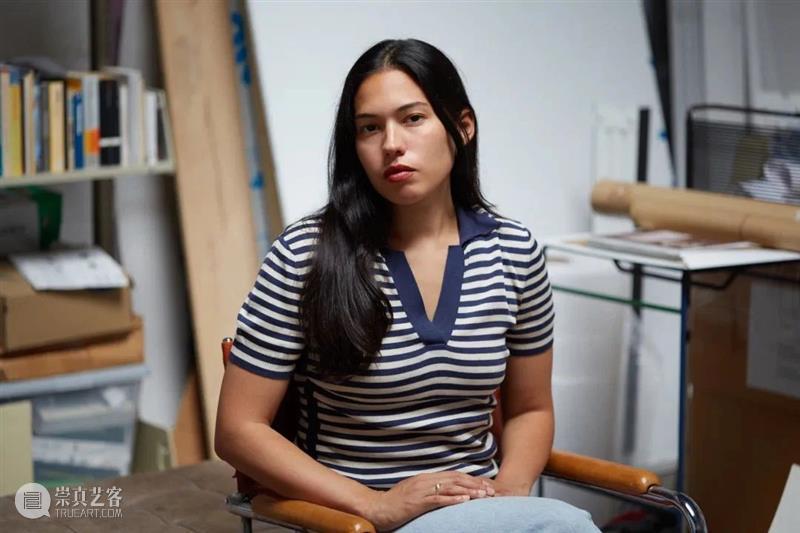
罗斯·萨兰
图片致谢艺术家和卡洛斯石川画廊
来自鞠白玉
每当罗斯·萨兰抵达市政厅,幸福的人们已经散去,不管新人曾经或往后相信人生多么嬗变,在这一天他们都相信誓言,带着许诺和希冀开始建构与以往不同的生活,而萨兰只是拾起这些撒在新人身上后落地的彩色纸屑,她搜集它们,展示它们,以捕获一种想象,是关于他者的和自我的。
罗斯·萨兰的系列作品背后是她行动中的情感仪式,这个仪式使我们会联想到城市的“游荡者”,在一个最具现代化最资本化的超级城市,她通过游荡和拾取重新找到我们时代日渐失落的关于传统、记忆,价值和语言的整体,她先于作品而提前收藏了人与生活的关系,同时也提出了一个隐性的悖论式的问题:那就是秩序建构和人们的私人情感究竟有什么关联;市政机构的婚礼仪式为婚姻提供了合法性,我们的深情需要一份权威证书;由内心秘密开始的爱成为公开的誓言被见证了 ,直到今天,我们仍然乐于采取一种古老的结盟方式—誓言,它帮助我们去想象和建构一个全然未知的生活。
收藏家与游荡者的古老身份正是本雅明重新赋予它们现代性的意义,在信物的宝藏中闲游信步,之于罗斯·萨兰,市政厅婚礼后遗留的纸屑就是证物, 是能量,是新人们开启个人新时代的确切的瞬间,而萨兰在这私密中的汲取发现了更广泛的命运的舞台,“研究它们,爱它们”,是本雅明教会我们对寻常物件的醉心,于是罗斯·萨兰和从未见过的人的命运至此有了关联,她搜集的是他们关于“时间、记忆和未来的票根”。
罗斯·萨兰生长在纽约皇后区的一个大家庭中,小时候和姐妹们一起翻看父母结婚时的录影带,其中记录下的婚礼的时刻提醒她,这是她们生命的序言和前奏,允诺的生活由这一天展开,而她们是阶段性的结果和绵延的未来。当萨兰成为一名职业艺术家,在她的工作日常里就是由动态的物体来处理对时间的看法,从“物”中演化出的内心叙事使她在职业生涯和私人生活之间没有界限,这一切行动可能只是为了去体验和抵抗时间的威力,寻常的碎纸屑,因为仪式被赋予的价值,由她的作品转换成一个有关记忆和希望的载体。
油罐艺术中心展出的《八个誓言》是始于罗斯·萨兰自2023年5月开始的收集项目的成果展示,这个项目驱使她每天都要去市政厅所属的各个机构,和她童年时一样,日复一日穿梭在纽约。八张照片里的每一张都有明确的日期记录,这个记录当然是之于她个人的重要性,因为每一天都可能成为决定性的,特殊的经验。比如7月6号这一天的白色心形纸屑,它不仅仅意味着拍摄对象的主人的生活,而是同时勾连起她当天的感受和记忆,一个炎热的夏天午后,这些纸屑布满了整个台阶,青少年们在机构门口玩滑板,他们帮她一起收集,她总是要和身边的人交谈,告诉他们自己为什么要这么做,她会记得当天还发生了什么,比如她的车抛锚了,这个世界上每一样发生的事情都不是孤立的。所以这些记录除了关于陌生人的仪式,它们也是艺术家的生命生活里的日常,因为我们如此擅于遗忘,需要倚靠这些事物才能编织日后的回忆,这就是属于艺术家自己的普鲁斯特的玛德琳蛋糕。
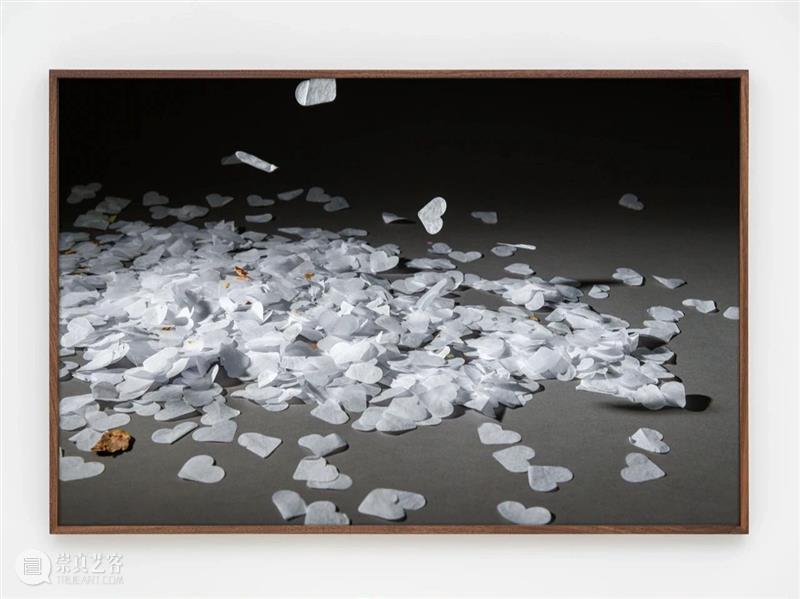
罗斯·萨兰
《2023年7月6日》
2024
彩色印刷,铝框装裱, 69.7 x 105 x 4.7 cm
图片致谢艺术家,Carlos/Ishikawa, London & 上海油罐艺术中?
像普鲁斯特在文学中做到的那样,萨兰给我们呈现的不是一个无边的时间,而是繁复交错的时间,由物品获得的通感,不仅仅是通过色彩和形状各异的纸屑,她的目光也会追随关于仪式和承诺的其他物件,比如在2019年她就曾经通过纽约地铁遗失中心的拍卖活动上得到了94枚戒指,这个展示她直接取名为:“persons 94”;2020年她通过纽约大都会运输署拍卖到大量硬币,这些硬币在疫情前的两年间曾是人们为了逃避交通和售卖机费用而特意使用的“假币”,而萨兰将它们分类成五个部分并且分别命名,以呈现城市秩序下的不同信仰不同价值观下的复杂社群;作为真正的纽约人,以及她的建筑学院的背景,物可以缩小如纸屑钱币和戒指,物也可以是城市建筑,当21世纪百货公司倒闭时,她以童年对它的深厚情感去进入商场搜集其中的物品。
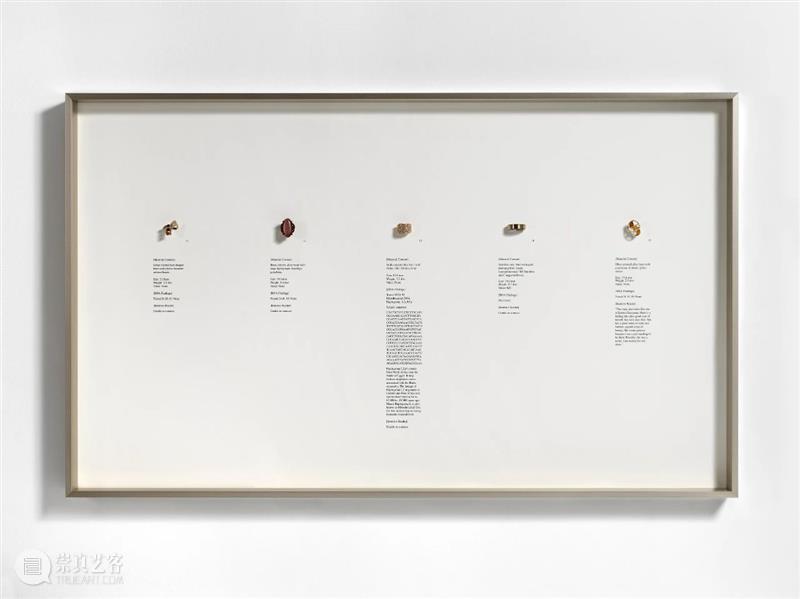
Rose Salane
Person 11-15, 2019
Silkscreen print, found rings
59.5 x 99cm
一旦进入人与物互证的循环,就没有毫无意义的物品和凭白消逝的时间,这些遗失的,抛却的物作为活过的证据,使城中穿流不息的纽约市民们在庞大与微小的物证中,不断地交集着他们的故事,尽管他们自身对此种交集还一无所知,却汇合成了一个流动的、充满机能和活力的城市的历史。 就是这样,八幅照片,八个誓言,拖着我们坠入了时空互相辩证的漩涡,我们看不到事物背后具体的人物肖像,却可以感知和勾勒出一个远比肖像更为深刻的情境,在这个情境中,物不再拥有被社会商业界定的价值,而是它如何与人建立的关联,这种被艺术家赋予了仪式感的关联,激发了我们对生活的珍视,对他人与我们的连接变得心照不宣。
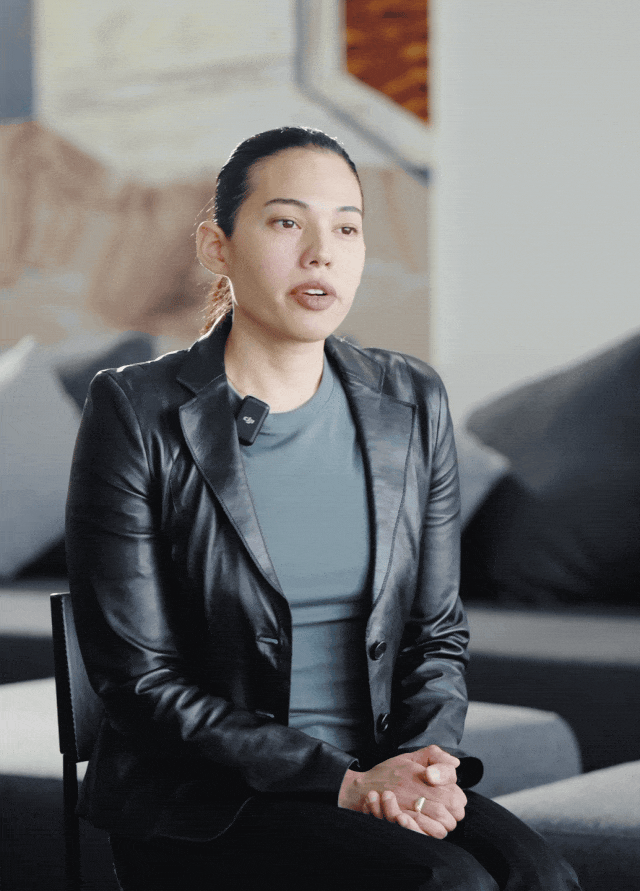
罗斯·萨兰接受艺术访谈
对话罗斯·萨兰
问题1:艺术家的导览中提到这个行动是一种情感仪式的记录,我想大概了解一下你的生活经历,在一个什么样的城市和什么样的家庭长大?在你童年少年时期你第一次参加的婚礼是什么样的,你对此的记忆和感受是什么?
罗斯·萨兰:我来自一个大家庭,在纽约皇后区的一个地方长大,从那里到纽约市中心通勤需要一个小时。从小我就开始每天通勤上学,我总是对城市中心对劳动力和标志性场所的吸引力感兴趣。虽然我年轻时只参加过几场婚礼,但我隐约记得它们所需的过度筹划。更重要的是,我记得看着我的父母婚礼的录像带。每次我重播他们庆祝的记录时,我都会反思结果和未知数,以及我和我的姐妹作为他们的未来下一代在现在观看过去在我们电视屏幕上重演的情景。
问题2: 这些不同样式的彩屑在最初给你传达的感受是什么?起码我在看到作品的时候时最强的感知竟然是“生活的不确定性”,因为它“不确定”所以我们需要纪念和仪式,所以作品给我的感受最强烈的部分是伤感的。
罗斯·萨兰:因为我在结婚登记处的门口到达时,婚礼已经结束了,所以我没有见证撒洒彩带的新人。我觉得最大的情感来自于来到这个地方,仅仅看到台阶上留下的彩带残留物,记录了一天的婚礼仪式。以一种调皮的方式,这让我想起了我们最终追求想要完成的希望和承诺的循环,以及组建家庭和官僚主义如何使我们完成这些目标。我仍然在尝试去理解这种材料是否因我发现它的状态而感到忧郁:不是在空中飘扬,而是沉淀下来的颗粒。收集了各种不同的彩带的收藏品表明了这个地点经历的重复,对我来说这些是最感人的。
问题3:你的作品令我想到瓦尔特·本雅明对于寻常物件的沉醉。在日常事物中,对于私密的汲取和广泛的探索之间的辩证关系,所以我在你的作品中看到的当然不仅是彩色纸屑,对我来说,它等同于群体的肖像、个人的肖像、生活的肖像。对于这一点我想知道您的看法是什么。
罗斯·萨兰:我记得在短文《开箱我的图书馆》中有这样的描述,瓦尔特·本雅明描述了收藏者与他们的物品之间的关系为“无序与秩序之间的辩证张力”。我发现自己接近物品时,即使通过市场的分配给它们强加了一种秩序,它们看似混乱的状态也仍然存在。我意识到并被吸引到这些物品中嵌入的许多演变中。本雅明还指出,收藏者对物品的迷恋并不仅仅基于其实用性或功利价值,而是“把它们当作命运的舞台和场景来研究和热爱。”作为一名彩带收藏者,我积累了许多婚礼在同一地点举行时所留下的彩带。我对这些彩带在视觉上的趣味性感兴趣,同时也保持了我可能永远不会见到的人们的能量和意义。
问题4: 您是仅关注于婚礼这个“仪式”还是也会有其他的“仪式”作品。如果目前是仅在婚姻仪式上,那么你是否会同意哲学家巴迪欧说的“爱,是一个最小单元的共产主义”这种说法?
罗斯·萨兰:我通常不关注婚礼仪式,这是第一次。我认为通过这个项目,我也在试图重新爱上纽约市。当我看到结婚登记处的台阶所产生的东西时,我想:也许我可以从那里开始。我对各种不同类型的关系都持开放态度,这些关系帮助我们定义我们的价值观。我总是对信仰和信念驱使的原因以及鼓励或阻止我们的力量以及我们如何在这些障碍中航行感兴趣。
问题5: 在市政厅的场所,这种公共场所,决定了私人生活的“合法性”,你怎么看待这个公共与私人的关系。你不是在教堂,不是在私人场所,不是在婚礼,而是在市政厅收集纸屑的原因主要是什么?
罗斯·萨兰:我认为像市政厅及其周围这样的政府建筑,在调解和承办大量合法事件的同时,也具有一种忧郁的现实感。在该地区的许多建筑物处理城市居民生活中的种种困境,市政厅,特别是结婚登记处的台阶,为人们带来了光芒和庆祝。我认为,它的位置不在一个私密或特定宗教的环境内,吸引了这种令人难以置信的生活和经历的多样性。我记得曾在结婚登记处参加过婚礼,那里等待的时间很长。通常你不能有很多人和你一起等待;只有婚礼的证人和一些特定的家人或朋友。由于极其官僚主义,仪式的表演与市政厅内外的市政环境形成了对比。看到各种类型的婚礼与法院律师推着法律文件的手推车一起并存,令人惊叹。发现这些碰撞是我实践的重要推动力。
问题6: 你的工作使你会成为一个“城市旅行者”,在公共领域里观察人们的私人仪式,而这个仪式包括了承诺,期待,合约等等,这段创作生涯对你个人生活会产生什么样的影响?
罗斯·萨兰:我认为我的个人生活和兴趣已经影响了我实践的这个方面,并且越来越难以区分个人和艺术:我把它们视为相关的。我一直想弄清楚如何处理城市的心理元素,并展示日常接触产生的平凡事物既忧郁又富有趣味,但也与某个地方的时间和记忆有着重要的关系。随着我能够访问更多的城市,了解更多特定文化的基础和仪式,我越来越渴望理解存在的主线以及调解它们的因素。

In English:
From Baiyu Ju
Whenever Rose Salane arrives at Civic Center, the happy people have already dispersed. No matter how much the newlyweds may have experienced or will experience life's changes, on this day they believe in their vows. With promises and hopes, they begin to construct a different life from before. Salane only picks up the colorful paper scraps that have fallen to the ground after being tossed on the newlyweds. She collects them, displays them, to capture an imagination, one that is about others and herself.
Behind Rose Salane's series of works is the emotional ritual in her actions, which evokes the "wanderers" of the city. In one of the most modern and capitalistic metropolises, she rediscovers the aspects of tradition, memory, values, and language that are gradually lost in our era through wandering and picking up. She, ahead of her works, collects relationships between people and life, while also posing an implicit paradoxical question: what is the connection between the construction of order and people's personal emotions? The marriage ceremony of municipal institutions provides legitimacy for marriage; our deep affection requires an authoritative certificate. Love that begins as a secret from the heart becomes an open oath witnessed by others. Even today, we are still willing to adopt an ancient form of alliance—vows—which helps us imagine and construct a completely unknown life.
The ancient identities of the collector and the wanderer are precisely the meanings that Benjamin reinterprets with modernity, wandering leisurely in the treasures of relics. To Rose Salane, the paper scraps left behind after the Civic Center weddings are evidence, energy, and the exact moment when the newlyweds embark on their personal new era. In this intimacy, Salane's exploration has discovered a broader stage of destiny. "Studying them, loving them," as Benjamin teaches us to be infatuated with ordinary objects, so Rose Salane's fate becomes connected to those she has never met. What she collects are their "tickets" about "time, memory, and the future."
Rose Salane grew up in a large family in Queens, New York. As a child, she watched videotapes of her parents' wedding with her sisters. The moments captured in the wedding recordings reminded her that this was the prologue and prelude to their lives, where the promised life unfolded on that day, and they were the episodic results and the enduring future. As Salane became a professional artist, her daily work involved dealing with perceptions of time through dynamic objects. The inner narratives evolved from these "objects" blur the boundaries between her professional career and personal life. All these actions might just be to experience and resist the power of time. Ordinary scraps of paper, endowed with value by the ceremony, transformed into carriers of memory and hope through her works.
The exhibition "Eight Vows" at the Tank Art Center Shanghai is the culmination of Rose Salane's collecting project, which began in May 2023. This project drives her to visit various institutions affiliated with Civic Center every day, much like her childhood days, shuttling through New York day after day. Each of the eight photographs in the exhibition is accompanied by a specific date record, which holds personal significance for her, as each day could potentially bring decisive and unique experiences. For example, the white heart-shaped confetti on July 6th not only signifies the lives of the subjects being photographed but also connects to her own feelings and memories of that day. On a hot summer afternoon, the steps were covered with these confetti, while teenagers played skateboards at the entrance of the institution. They helped her collect them, and she always talked to the people around her, explaining why she was doing this. She would remember what else happened that day, such as her car breaking down. Everything that happens in the world is interconnected. So these records are not just about the rituals of strangers; they are also the daily life of the artist herself because we are so good at forgetting, we need these things to weave memories for the future. This is the artist's own Proustian madeleine cake.
Like Proust achieved in literature, Salane presents to us not an infinite time, but a complex intertwining of time, obtained through synesthesia from objects. It's not just the various confetti in colors and shapes; her gaze also follows other objects related to rituals and commitments. For example, in 2019, she obtained 94 rings through an auction at the New York City Lost & Found Center, a display she directly named "Persons 94". In 2020, she acquired a large number of coins through auctions held by the Metropolitan Transportation Authority of New York City. These coins were used as "tokens" by people to evade transportation and vending machine fees in the two years before the pandemic. Salane categorized them into five parts and named them separately, to present the complex communities under different beliefs and values in the urban order. As a true New Yorker, and with her background in architecture, objects can be as small as paper scraps, coins, and rings, or they can be city buildings. When department stores closed in the 21st century, she entered them to collect items with a deep emotional connection from her childhood.
Once entering the cycle of mutual verification between people and objects, there are no meaningless items or time lost in vain. These lost and discarded objects, as evidence of having been lived, allow the ever-flowing citizens of New York City to continuously intersect their stories within the vast and minute evidence. Despite their unawareness of such intersections themselves, they converge into a fluid, functional, and vibrant history of the city. This is how, with eight photos and eight vows, we are dragged into the vortex of dialectical interaction between time and space. We may not see specific portraits behind the objects, but we can perceive and outline a scenario far more profound than portraits. In this scenario, objects no longer possess the value defined by society and commerce; instead, it's about how they establish connections with people. This sense of ritual endowed by the artist inspires us to cherish life, and the connection between others and ourselves becomes tacit.
Meet Rose·Salane
Q1: The artist’s guide described this project as a recording of an emotional ritual. I am interested in comprehending more about the context of your upbringing. Could you share about the city and family environment you grew up in? What was your first memory of attending a wedding in your youth, and what impressions or feelings do you recall from that experience?
Rose: I am from a big family and I grew up in the area of Queens, New York from which it takes an hour to commute to a central part of New York City. From a young age I started commuting into the city for school and I was always interested in the pull that the city center has on labor and sites that hold iconography. Although I only attended a few weddings when I was young, peripherally I recall the excessive planning that went into them. More so, I remember watching a VHS tape of my parents’ wedding. Each time I replayed the documentation of their celebration, I reflected on the outcomes and unknowns and on myself and my sisters as their future in the present watching the past repeating on our television screen.
Q2: What initial emotions did the diverse styles of confetti evoke for you? For me, the most profound sensation upon viewing the artwork was a sense of life’s uncertainty. This sense of ambiguity seems to necessitate the creation of memorials and rituals, infusing the artwork with a poignant sense of melancholy.
Rose: Since I arrive at the Marriage Bureau door after the weddings have taken place for the day, I am not witnessing the couples for whom the confetti is thrown. I think the biggest sense of emotion comes from making a journey to this site to see just the remains of confetti on the steps documenting the day’s worth of marriage ceremonies. It reminds me, almost in a playful way, of the cycles of hope and promises that we ultimately seek to accomplish and how establishments and bureaucracy mediate these goals. I am still understanding if the material is melancholic because of the state in which I have found it: not airborne, but as settled particles. The collections that have a variety of different confetti indicate the repetition the site experiences and those to me are the most moving.
Q3: Your pieces remind me of Walter Benjamin’s infatuation with mundane objects. The dialectic between intimate extraction and broad exploration in everyday items is palpable. In your work, I perceive not only colorful confetti but a portrayal of community, individuality, and life itself. I would appreciate hearing your thoughts on this interpretation and perspective.
Rose: I remember this description in the short essay “Unpacking My Library” where Walter Benjamin describes the collector’s relationship to their objects as a “dialectical tension between the poles of disorder and order.” I find myself approaching objects in their seemingly chaotic states, even if a distribution of order is imposed on them through the marketplace. I am aware and drawn to the many evolutions embedded in the objects I find. Benjamin also notes that the collector is not just drawn to an object based on its usefulness or utilitarian value but rather, “studies and loves them as the scene, the stage, of their fate.” As a collector of the confetti, I have amassed an accumulation that is the result of many marriages that took place on one site. I am interested in how this confetti is visually playful while upholding an energy and significance of people I may never meet.
Q4: Do you focus exclusively on the ritual of weddings, or do you also engage with other types of ceremonies? If your work is centered on matrimonial ceremonies, do you resonate with philosopher Alain Badiou’s notion that “Love is the minimal form of communism”?
Rose: I don’t usually focus on matrimonial ceremonies, this is the first time. I think that through this project I am also trying to fall in love with New York City again. When I saw what the Marriage Bureau steps generated, I thought: maybe I can start there. I am open to the many different kinds of relationships we have to rituals that help us define our values. I am always interested in what drives a belief and faith and the powers that encourage or dissuade us and how we navigate through such obstacles.
Q5: The choice of city hall as a setting, a public space that adjudicates the legality of private lives, is intriguing. How do you perceive the interplay between the public and private spheres in your work? What primarily motivated you to collect confetti at city hall rather than at more traditional or private venues?
Rose: I think sites like Civic Center and its surroundings, which are government buildings that mediate and host a vast amount of lawful circumstances, have a melancholic reality to them. Where many buildings in the area process the adversities of city residents’ lives, Civic Center, specifically the Marriage Bureau steps, provides this sparkle of light and celebration. I think that its location not within an intimate or specifically religious environment invites this incredible diversity of lives and experiences together. I remember being inside the Marriage Bureau for a wedding and there is a lot of waiting. Usually you cannot have many people waiting with you; just the witness of the marriage and select family members or friends of the couple. As it is extremely bureaucratic, the performance of ritual contrasts the municipal environment both inside and outside the Civic Center area. It’s amazing to see weddings of all kinds alongside courthouse lawyers rolling carts of law documents from building to building. Finding these collisions is a big driving force of my practice.
Q6: Your role as an “urban traveler,” observing private rituals within public realms, involves elements of commitment, expectation, and contract. How has this aspect of your artistic journey influenced your personal life?
Rose: I think that my personal life and interests have influenced this aspect of my practice and that it is becoming harder to separate the personal from the artistic: I see them as contingent. I have always wanted to figure out how I can work with psychic elements of cities and show that contact in the everyday generates banalities that are melancholic and playful but also hold meaningful relationships to a time and memory of a place. As I am able to visit more cities and understand more foundations and rituals specific to cultures, I become more keen in understanding the throughlines that exist and what mediates them.
───── END ─────

TANK Shanghai 当前展览
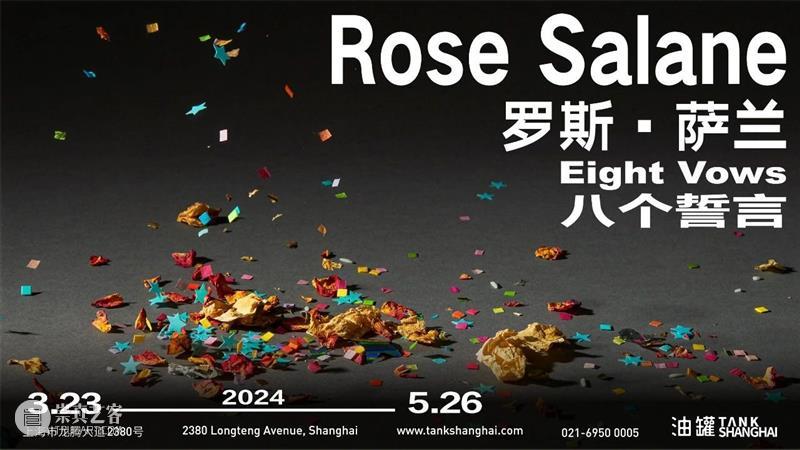
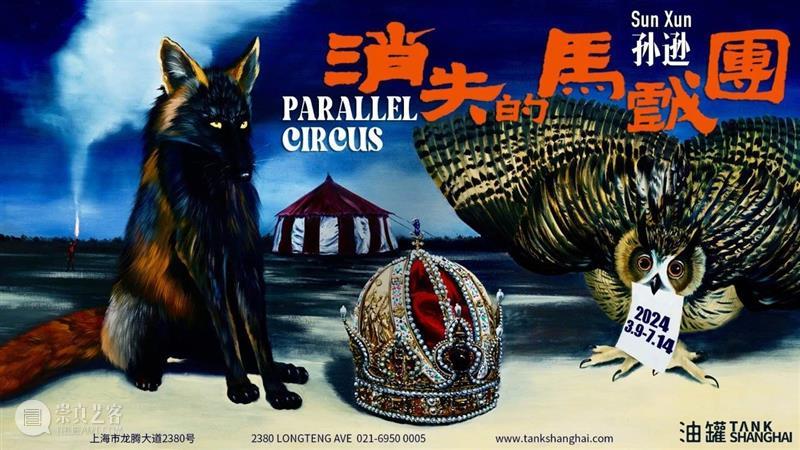
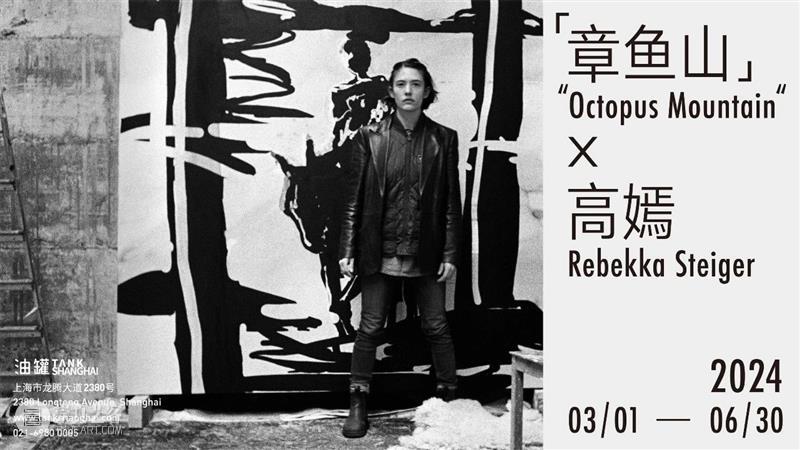

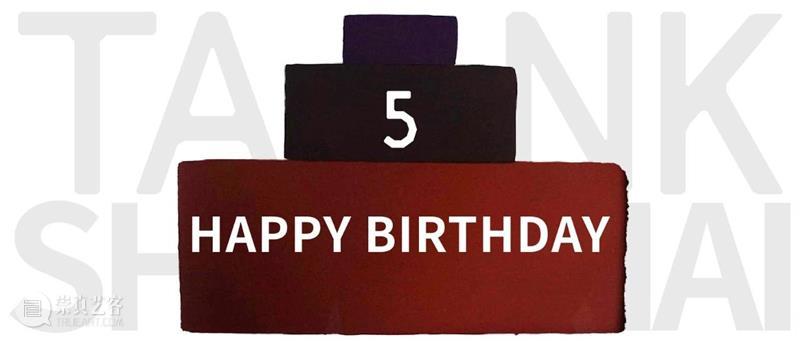
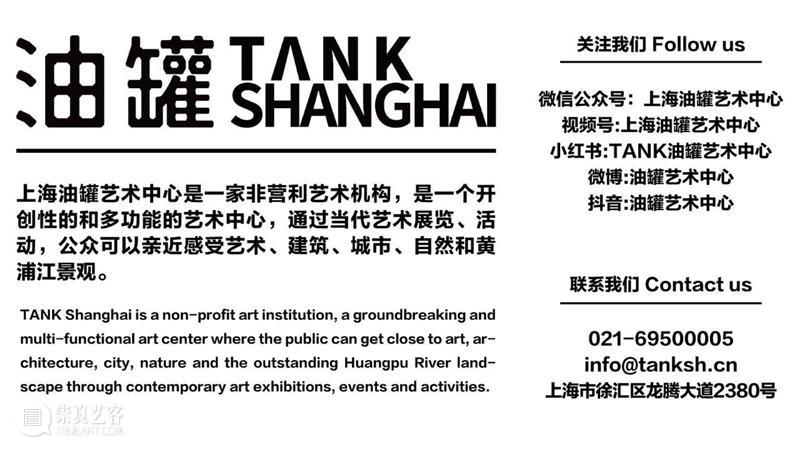


已展示全部
更多功能等你开启...






 分享
分享